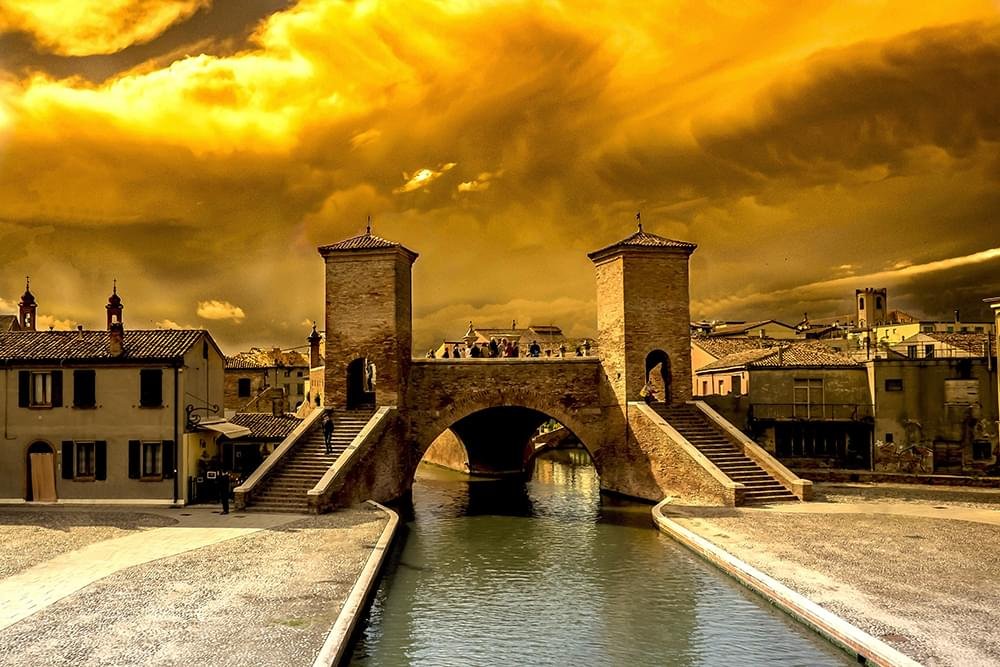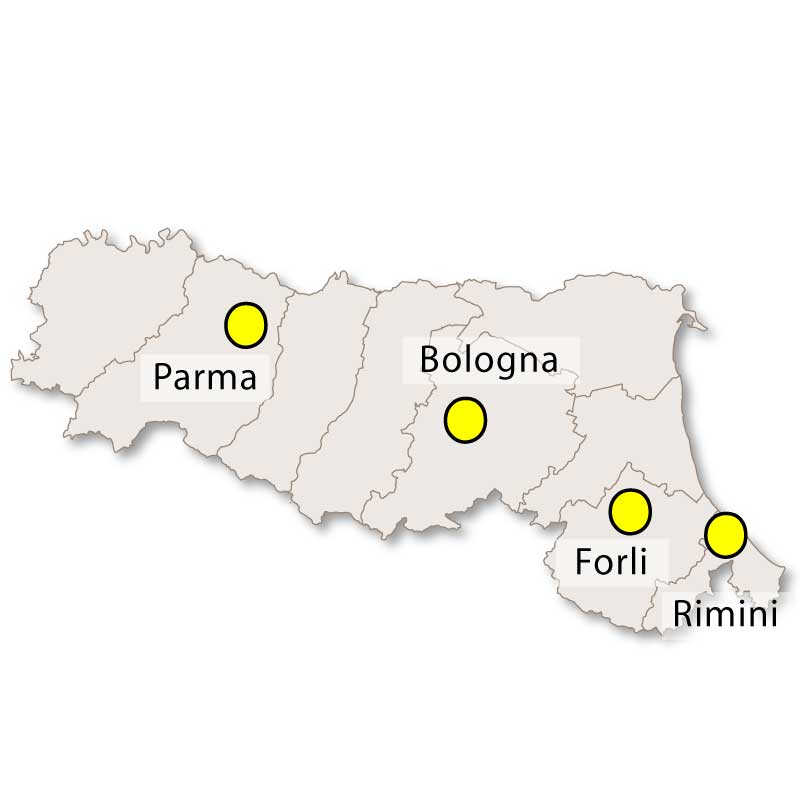
The province of Ferrara, nestled in the northeastern corner of the Emilia-Romagna region of Italy, is one of the country's most overlooked treasures. With a landscape that stretches from the fertile Po River plains to the wild Adriatic coast, the province is a place where centuries of history, art, and natural beauty come together.
Unlike more touristic regions, the province of Ferrara offers a quiet, authentic Italian experience. It is steeped in the heritage of the powerful Este family, who shaped the territory’s Renaissance glory. Visitors can still sense their legacy in the architecture, art, and layout of towns across the province.
Though the city of Ferrara is renowned for its Renaissance elegance, the influence of the Este family extends far beyond its borders. In towns like Voghiera, Mesola, and Copparo, you can find historical villas and former noble estates that once belonged to the Este court.
These outposts served both as retreats and strategic centers, preserving their charm to this day. The Castello Estense in Mesola is a striking example, blending elegance with a military past, set against the calm countryside and encircled by oak woods and deer trails.
The province is dotted with small towns and villages that maintain a strong link to rural traditions and slow living. Places like Ostellato, Portomaggiore, and Tresigallo offer a glimpse into agricultural life, often accompanied by food festivals, weekly markets, and artisanal fairs.
Tresigallo is particularly unique, known as the metaphysical town for its rationalist architecture, designed under Mussolini’s regime as a utopian model town. Its grid of clean lines and open spaces gives it an eerie beauty that draws architecture lovers and curious visitors alike.
Nature is one of the most compelling reasons to explore the province of Ferrara. Dominated by the great Po River and its delta, the landscape is an ever-changing mosaic of lagoons, marshes, and canals. The Po Delta Regional Park is a UNESCO biosphere reserve and a haven for birds and wildlife.
Visitors can explore this vast natural world by bike, boat, or on foot. Birdwatching is particularly rewarding here, with species like flamingos, herons, and egrets drawing nature photographers and enthusiasts from across Europe.
The town of Comacchio, known as "Little Venice," is one of the jewels of the Ferrara province. Built on thirteen islands and connected by arched bridges and narrow canals, it offers a unique charm unlike anywhere else in Italy.
Comacchio is famous for its eel fishing traditions, which are still practiced today. The town hosts an annual eel festival each autumn, offering visitors the chance to taste dishes passed down through generations, served alongside local wines and rustic bread.
The province of Ferrara is a culinary delight, drawing heavily on its agricultural roots and riverine bounty. Signature dishes include cappellacci di zucca, large pasta stuffed with sweet pumpkin and seasoned with sage and butter.
Salama da sugo is another regional specialty, a heavily spiced, cured pork sausage simmered for hours and typically served with mashed potatoes. The cuisine is hearty, flavorful, and reflects centuries of rural cooking tradition, making it a highlight of any visit.
Flat and crisscrossed with a network of bike paths and canals, the province of Ferrara is ideal for slow travel. Cycling through the countryside offers a peaceful way to absorb the region’s scenery, from rice fields and orchards to abandoned abbeys and wildlife-rich marshes.
Routes like the Destra Po cycle path follow the river for over 100 kilometers, linking villages, historical landmarks, and natural reserves. With countless opportunities to stop for a meal, take photos, or simply rest under a tree, it’s perfect for those who love relaxed exploration.
The cultural calendar in the province of Ferrara is rich and varied. In addition to the eel festival in Comacchio, there are medieval pageants, Renaissance reenactments, and food fairs throughout the year. The Palio di Ferrara, although based in the city, spills over into the province with celebrations and parades.
Other towns like Cento are known for their own spectacles, such as the Cento Carnival, which rivals those of more famous cities with its vibrant floats, music, and costumes. Every season brings a new reason to visit, whether you're drawn by food, history, or traditional rituals.
Beyond the obvious tourist spots, the province hides many architectural surprises. Romanesque churches, Renaissance fortresses, and early Christian mosaics dot the landscape. The Abbey of Pomposa is one such jewel, with its thousand-year-old bell tower and frescoes that rival those in better-known cathedrals.
Each small town has its own character and set of historical buildings, from 18th-century town halls to medieval watchtowers. These places are rarely crowded, allowing visitors to experience them in peace and often in solitude, lending a special atmosphere to the journey.
The province of Ferrara is a region of understated beauty and rich contrasts. It offers visitors a deeper, more intimate encounter with Italy, away from the bustling tourist trails. Here you can immerse yourself in Renaissance art, medieval legends, and nature all in one day.
It is an ideal destination for those who appreciate heritage, gastronomy, and serenity. Whether you’re biking along the Po, exploring forgotten abbeys, or enjoying fresh eel by a canal, Ferrara province opens its arms to those seeking the soul of northern Italy.

More Details



